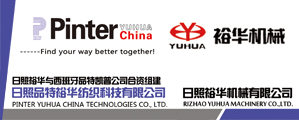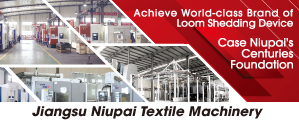Textile Industry Analysis
Jul 03, 2013 | by
In 2012, under the negative situation with many external risks such as weak international market, cotton price difference, increasing production costs, etc., the textile industry accelerated the transformation and upgrading of industry with the deepening of industrial structure, and caught the opportunities of domestic market tightly, which made a smooth operation in the whole year, showing a stabilized trend of the whole economic growth.
According to the latest textile industry economic operation situation issued by the CNTAC, in the year of 2012, the whole industry mainly reflected the following characteristics:
The main economic indicators showed stable growth. According to the NBS and customs statistics, in 2012, the 37,000 textile enterprises above designated size reached 5.781 trillion yuan total industrial output value, a year-on-year increase of 12.3%, and profits from January to November amounted to 245.75 billion yuan. The fixed assets investment of the projects with over 5 billion yuan in the whole industry totalized 779.3 billion yuan, seeing a year-on-year growth of 14.6%, and the textile & apparel export amounted to $262.56 billion, up 3.3% during the year of 2012.
Comparing with the major national manufacturing industry, textile industry continued to top the list with faster production growth, playing the support role for the national economy growth, while profit growth of textile industry was below the light industry and machinery industry.
Industrial structure adjustment made new progresses. In 2012, with the help of enhanced internal dynamism and external environment, textile industrial structure adjustment continued to deepen, which plays a fundamental support role in the realization of industrial smooth operation.
Technological progress of textile industry promotes the improvement of production efficiency. From January to November last year, per capita output value of enterprises above designated size saw a year-on-year increase of 14.2%. The industry paid more attention to the domestic demand for industrial development, and made market structure further reasonable, resulting in 12.3% year-on-year growth of domestic output value of enterprises above designated size, which was 9.9 percentage points higher than the growth rate of export delivery value.
Industrial chain terminal link — brand development, had made considerable achievements in a good growth trend. From January to November, the profit growth rate of home textiles and high-tech textiles industrial enterprises above designated size reached 14.9% and 16.2% respectively, significantly higher than the industry average level.
Organization structure had been optimized; production orders seemed to concentrate on large enterprises apparently. According to the commerce ministry data, from January to November, the growth of the total export of the national top 20 export clothing enterprises realized 33.6%, 30.2 percentage points higher than the average growth of export clothing industry.
The regional layout structure adjustment continues to develop. Last year, the annual fixed asset investment of six central provinces increased by 15.9%, 3 percentage points higher than the eastern region.
The pressure of industry development had increased. Although the overall trend of the operation was smooth, compared with the year 2011, in 2012, the growth rate of textile industry economy had declined. The industry still faced with a serious of problems in the process of development.
First, the international market demand was still weak. According to relevant data, from January to November, the total textile and apparel import of the United States and the European Union decreased by 0.9% and 5% respectively, resulting in a shortage of orders for China export enterprises.
Second, cotton price difference was continually widened. Affected by the domestic management policy, by the end of 2012, domestic cotton price was 45% higher than the international market, which made a serious impact on the competitiveness of cotton textile industry chain. From January to November last year, China’s cotton exports decreased by 8.9%, while the imports saw a sharp increase of 56.1%.
Third, the international market share had dropped. Affected by the factors like cotton price difference and increasing production costs, China’s international market share of textile industry had fallen slightly. From January to November, the market share of EU and Japan was 73.2% and 40.1% respectively, which still kept a high level, but compared with the same period pervious year, the market share had dropped 1.8 percentage points and 1.1 percentage points respectively.
In 2013, domestic and international economic situation is still relatively complicated. Facing with many challenges and risks, the textile industry development should be prepared with positive factors. Domestic market will continue to provide motive power for textile industry stable development, at the same time, pressures like the weak domestic and international demand, cotton price difference, increasing production costs still exist.
Generally speaking, textile industry is expected to maintain the steady growth trend and present the following characteristics in the year of 2013.
Production and sales growth is expected to improve steadily. In 2013, affected by the European debt crisis and many uncertain factors, the international market does not have significant improvement conditions and will not deteriorate obviously, which means that the the textile industry export is expected to remain relatively stable.
Along with the increasing income of urban and rural residents and the orderly propulsion of urbanization construction, all policies and measures to enlarge domestic demand have been further implemented with significant effect. The domestic market will keep a stable and faster growth, driving up the textile industry. It is expected that, the production and sales growth of textile industry will accelerate in 2013.
Since the international situation and domestic demand need a certain process to become stronger and powerful, the whole industry economic operation is expected to maintain the situation in 2012 for the beginning of 2013, and in the second half 2013, the textile industry economy will speed up gradually.
Cotton policy has outstanding impact on the industry operation. Since the international cotton market is still facing oversupply, the international cotton prices lack sharply in power in 2013. In addition, in 2013, the domestic cotton prices will remain high and the cotton price difference will continue to exist, which due to the fact the cotton temporary collection and storage continues to implement with large probability.
At present, the cotton price difference at home and abroad is as high as 6,000 yuan/ton. It is hard to solve the negative impact caused by the price completely only rely on the adjustment of textile enterprises themselves. So how to reduce the cotton price difference effectively, so as to relieve the industry competition stress from the policy level, has become the most important factor of textile industry operation.
Pace of structural adjustment will be further accelerated. Since the outbreak of the international financial crisis in 2008, textile industry has gradually turned to pay more attention to optimizing the development structure on the basis of steady growth. Enterprises’ self-conscious demand of structural adjustment and upgrading has been increasing under the effect of market competition.
In 2013, the inner power of industrial transformation and upgrading is still enough with the improvement of external environment last year. In addition, the existing pressure of intense competition and rising costs will also accelerate the optimization, adjustment and upgrading of textile industry development.
In order to ensure that the textile industry economic development will keep stable growth, the whole industry will carry out the following works, combining with the actual industry development.
To further implement the four strategic tasks of “Textile Powerful Country”. The industry will continue to regard the construction of textile powerful country in 2020 as the basic goal by strengthening services, deepening the implementation of science and technology progress, brand construction, sustainable development and personnel training.
To accelerate the structural optimization and adjustment of industry. The whole industry should further promote the optimization of industrial layout, organization, resource allocation, and market structure, speed up the transformation of economic development mode and improve the industrial ability of defusing external risks.
To bring industry organization into full play. Industry organizations should finish basic service work conscientiously, such as perfect the public service function, make deep investigation and analysis of industrial policy research work, and reflect industry dynamic and enterprise appeals timely, in order to create a better development environment for textile enterprises.








